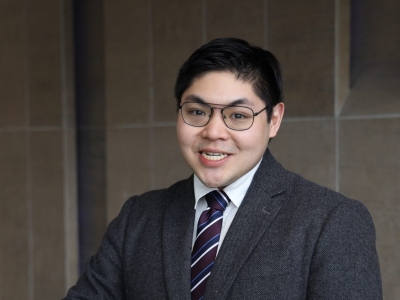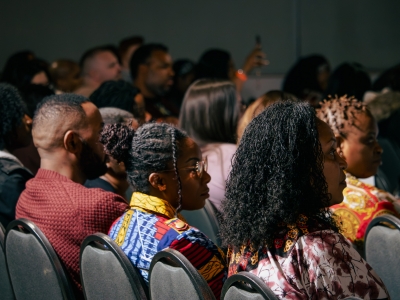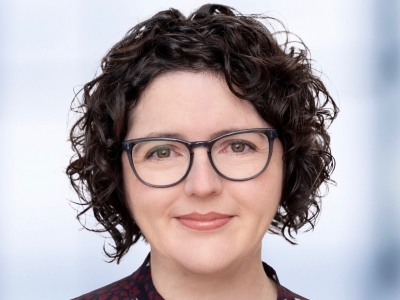By Karen Kelly
Photos by Bryan Gagnon
Typically, a global aerospace and defence company like Collins Aerospace would work with academics in technical fields such as engineering. But a partnership with researchers in the social sciences? “This is pretty rare,” says Guillaume Côté, the company’s Principal Strategy Development Manager.

Left to right: Sean Murphy, Guillaume Côté, and Kevin Budning
Côté is leading the industry side of a Carleton University-Collins collaboration with faculty members and students from the Norman Paterson School of International Affairs (NPSIA). It’s being funded by a $240,000 grant through the Mitacs Accelerate program. The two-year project, entitled “The Impact of Emerging Technologies on Defense Policy”, is studying how different technological innovations will impact military and strategic affairs and policy, with the academic side being led by NPSIA Professors Alex Wilner and Stephanie Carvin, researchers in defence, security, and emerging technology.
“Working with industry through Mitacs is a triple score,” says Wilner. “Professors get an opportunity to work in partnership with industry and the public service on questions relevant to society. Students get training in both an academic and industry setting, improving their networking and research skills and prospects for future employment. And industry partners get to work on cutting-edge academic research relevant to their interests. The bonus: this sort of collaborative research is also a lot of fun!”
NPSIA PhD student Kevin Budning agrees. He serves as lead researcher on the project and the go-between between the Collins and Carleton teams. He and his Carleton colleagues are helping the company delve into future concepts and scenarios allowed by emerging technologies for the Canadian defence sector.
“The landscape of defence is changing rapidly. We are observing a dramatic shift towards new technologies that either augment conventional capabilities or replace them altogether,” explains Budning. “We’re looking at where this is going, how it impacts Canada, and how the industry can be ahead of the curve so they can ascertain a competitive advantage.”
Studying Emerging Technologies
The project has four main objectives. The team will explore, assess and analyze how different emerging technologies influence, degrade or augment four sectors: space-based communications; current (and future) connected battlespaces; military interoperability; and simulation and training.
“I’ve been focusing on the space-based communication aspect, specifically within the context of Five Eyes, an intelligence sharing alliance between Canada, the U.S., Australia, New Zealand and the UK,” explains Budning. “We are trying to understand how this network will adopt and employ new technologies – specifically spaced-based – across all domains in order to achieve full interoperability – if ever possible.”

Hannah Diegel (photo provided to the FPA)
The team also includes Hannah Diegel, a master’s student researching the topic of connected battlespaces.
“One of my favourite aspects about this project is the team atmosphere,” says Diegel. “Guillaume is able to lend a real world perspective to the academic research we are conducting while Kevin and Sean are terrific collaborators as we frequently bounce ideas off one another. I have really enjoyed getting to delve into different facets of how international affairs contributes to Canadian Defence.”
Sean Murphy, another NPSIA master’s student who serves on the team, describes the experience as the highlight of his Carleton experience.
“This project has allowed me to explore how emerging technology impacts international security and defense,” says Murphy. “It’s given me confidence to apply my background in technology to meaningful public policy challenges, and has given me exposure to industry’s role in driving defense innovation.”
The team members acknowledge that their schedule was turned upside down by the COVID-19 crisis. Guillaume Côté says it’s a testament to these students that they have remained committed.
“They are very serious about this even though the way forward has been a little uncertain,” says Côté. “For us, this is a way to identify talent, and I’ve been quite impressed with them.”
Tuesday, May 5, 2020 in General, News, Research
Share: Twitter, Facebook



